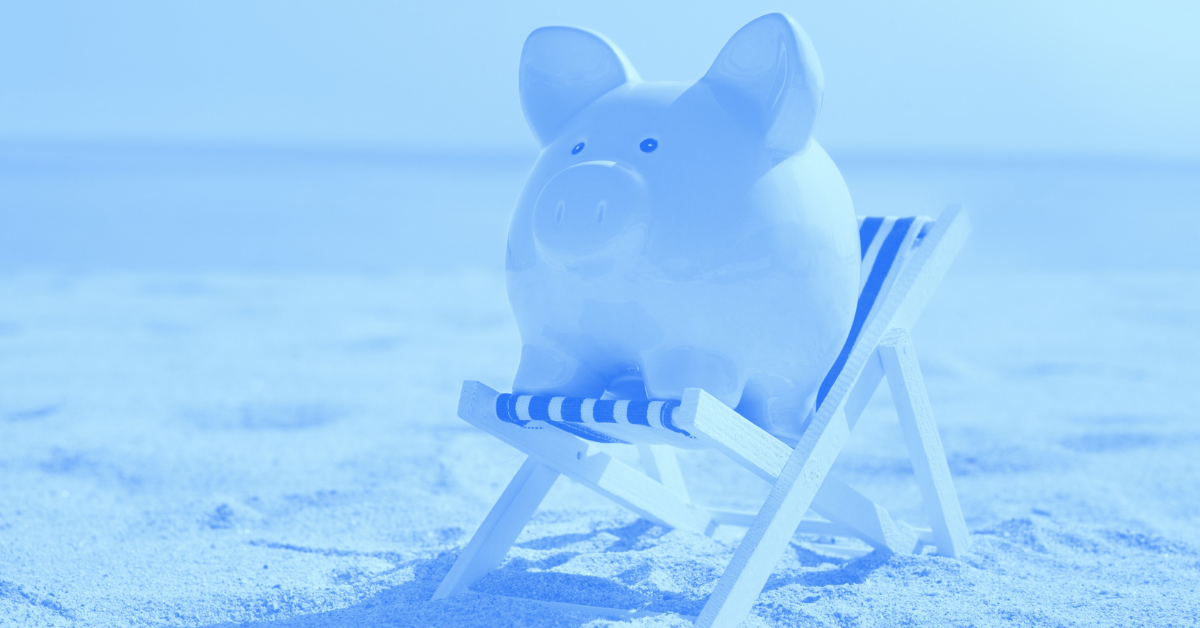How to Reduce Spending
Share this

7.5 MIN READ
I offer up these thoughts on spending in the spirit of: If it helps, I am happy. If this is not the right time for you to think about such things, please ignore them! The internet is wonderful (and terrible) in that nothing ever disappears. Come back later if you want.
Reducing spending is a topic that comes up with a lot of my clients (not all). Maybe they truly need to save more. Maybe, they just feel as if they spend too much, without having any specific or concrete thing to point to as a measure of “too much.” Maybe they grew up poor or “middle class” and their current income and lifestyle still boggle their minds.
As I often mention, changing habitual behavior is one of the most difficult things under the sun. (One of my favorite books about changing behavior is Switch: How to Change Things When Change is Hard. It’s a rollicking good read, not just for financial planners.)
Accordingly, changing spending behavior is one of the most difficult things in personal finance. This isn’t like saving more to your 401(k), which you can accomplish by logging into Fidelity and changing a % once. Changing your spending behavior means you are changing behavior multiple times per day, every day.
Over the years of working with clients and talking with fellow financial planners, I’ve had a lot of discussions about techniques for reducing spending, and ways of framing the discussion. These aren’t recommendations, per se. They are…what would you call them?…musings.
It might be either a particularly good or particularly horrible time to encourage you to do anything about your spending. If your psychic energy is squashed under the universe’s heel right now…may I recommend a bookmark for this post?
Set Saving—and Therefore—Spending %s, Even If They’re Arbitrary.
I have long been loath to give specific dollar or percentage recommendations to my clients for how much they should save or spend. In a perfect world, you identify what you want in your life, both now and in the future, calculate how much you need to save to pay for those things, and then spend the rest. Or you identify very clearly what your values are, what your ideal life looks like, and you adjust your spending accordingly.
Problem is, you rarely know most of what the future holds, what you want, and how much it’ll cost. So, there’s no objective answer to how much you need to save, and therefore how much you can spend.
Another problem is that it simply requires too much mental effort to figure out how to align spending with values or ideal life, and so nothing gets done.
Enter rules of thumb.
Arbitrary, sure. But as long as they’re reasonable, they can be awesome. My friends over at Mana Financial Life Design have found great success with their clients by using Ramit Sethi’s rules of thumb:
Of your after-tax income:
- Essential expenses (rent/mortgage, groceries, healthcare, etc.) = 60%
- Proactive savings (shorter term or the usual “retirement”) = 15%
- Guilt-free spending (whatever you want) = 25%
Many of us need specific goals to aim for. If you bring home $10,000 each month after taxes, it’s waaaaay more effective to say “Spend only $2500 on guilt-free spending each month, and be sure to save $1500 each month” than to say “Just spend less.”
A More Fine-Tuned Approach for Equity Compensation
Before you start getting too attached to these specific numbers, may I remind you that they’re somewhat arbitrary. And especially in the tech industry, where “lumpy” stock compensation can make up a huge part of your income, these numbers might be silly.
So, let’s make up another set of (mostly arbitrary but still reasonable) numbers! Like so:
Of your monthly salary,
- Essential expenses = 80%
- Proactive savings = 15%
- Guilt-free spending = 5%
Of your RSUs that vest quarterly (and in this example, that you sell 100% of),
- Proactive Savings = 80%
- Guilt-free spending = 20%
Of the ESPP shares that you get every 6 months (and in this example, that you sell 100% of),
- Proactive Savings = 100%
We’re just trying to get to the right ballpark, people. Life is too changeable, too unpredictable to get wrapped around the axle about getting the exact right percentages.
Go On a Cash diet
Mmmmm…maybe best for another time, but man, you want to crank down on your spending? Pay for everything you possibly can with cash. As in, dollar bills, not a debit card.
Sure, you can’t pay your mortgage or your gas bill that way. But you can pay for restaurants, bars, coffee, groceries, etc. that way. Probably the single biggest impact: it’d force you off Amazon and into local stores because you can’t pay cash on Amazon.
Handing over $100 in cash is a way different experience from handing over a credit card and having the numbers $100.00 pop up on screen and then you press “OK.”
Sounds tough, doesn’t it? Probably ‘cause it really would be. For a little while. If you want to conduct an experiment in your life, try doing it for just one week. Observe—maybe even write down—your daily spending behaviors each day of that week.
Reduce From the Top vs. Rebuild From Zero
We do spending reviews with each client. In preparation for that meeting, our clients collect their spending data from the last month or (ideally) 3 or more. One of the unfortunate consequences of this approach is that clients have a list of their current spending data right there in front of them, so the natural instinct is to start figuring out what to cut.
Eeeyuck. I can see, not just from my own personal spending experience, but also literally all the clients we’ve worked with, that cutting expenses from your current spending behavior is hard.
What about wiping the slate utterly clean, stop spending on everything, and then add back expenses one by one? Obviously, you can’t just stop paying your rent, but you can at least be aware of each dollar you’re spending on rent when you spend it…and for all those non-essential expenses, can you simply stop them?
Cancel your Spotify. Cancel your gym membership (ha ha). Cancel your Prime membership. Get your expenses down as close to the bone as possible, and then intentionally rebuild from there.
Lots of our clients have a ton of subscription services of various sorts. No one of them costs much, but altogether they add up to $100s each month. Instead of trying to pick this one subscription service and that one subscription service to eliminate, how about eliminate all of them, see what you really truly miss, and then add that one back in selectively, intentionally?
That’s great for recurring expenses, that you pay every month regardless of your use or value from them. For the expenses you actively incur every month, maybe take a month (a week) where you actively evaluate every purchase before you make it. Just for a month (or a week).
The goal here is to consciously spend every dollar, not just let dollars fritter out of your (e-)wallet without you really paying much attention.
Money can be many things, but among them the power to change your life, the power to protect you and your loved ones. Don’t you want to reserve all the money you can for those things instead of literally wasting them on things you don’t even think about?
Change “Proxy” Behaviors That Are Easier to Change.
We just discussed this with a client who was coming up with a “disaster plan,” lest she lose her job. (She’s the sole wage earner in a family of 4.) For her, “disaster plan” means knowing exactly what expenses she’d cut if her income went away.
Not surprisingly, they identified groceries as a big expense (especially during these here quarantine times). They typically shop at Whole Foods. To spend less money at Whole Foods, they’d have to pay attention to each and every item they purchased in Whole Foods. Exhausting.
Or they could change the store they shop in. If they instead shop at Kroger (pick your cheaper grocery store), then they have to make that single change (where they shop) and not worry about all the individual choices once they get to the store. That sounds a lot less exhausting—and therefore a lot more doable.
So instead of changing the identified spending behavior—which foods they bought-—they can change a proxy behavior—where they shop. That is much easier to do.
Eliminate One Big expenses vs. Reduce Many Smaller Ones
This is something I bring up with all our clients who want to reduce spending. It all starts with that spending review, for which they gather a few months’ worth of spending data. We then walk through it category by category.
Client wants to spend less money. Client starts talking about “Maybe I can spend less on groceries, and I can spend less on clothing, and I can spend less on blah blah blah.”
My question is: Do you think it’ll be easier to keep track of how much you’re spending on groceries and clothing and coffee shops and blah blah blah, and spend less on all of those things…or just choose a category or two to spend nothing on, at least for a short while? Can you simply not go out to dinner for a while? (Okay, bad example during quarantine.) Can you simply eliminate your gym expense? I don’t know, maybe those sound crazy to you. But are there other things in your spending life that could really just be Done Away With?
Again, I’m thinking of the psychic energy, the will power, the discipline that is involved in spending less money…and how limited it is. What are ways you can use less?
.png?width=200&name=Meg%20Bartelt%20(1).png) About the Author
About the Author
Meg Bartelt, CFP®, MS, is the President of Flow Financial Planning, LLC, a fee-only virtual firm that provides financial guidance to women in tech. Previously, she spent over a decade in the software industry.
Did you know XYPN advisors provide virtual services? They can work with clients in any state! View Meg's Find an Advisor profile.
Share this
Subscribe by email
You May Also Like
These Related Stories

Creating a Retirement Paycheck

8 Benefits Of A 401(k) You Might Not Know About



